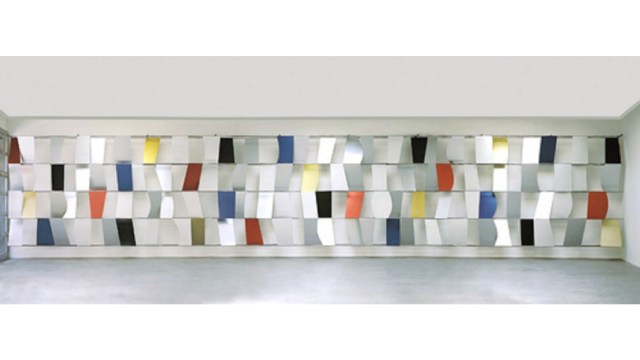The Last Great Discovery Of Our Trip To The Moon: Lunar Volcanic Glass!
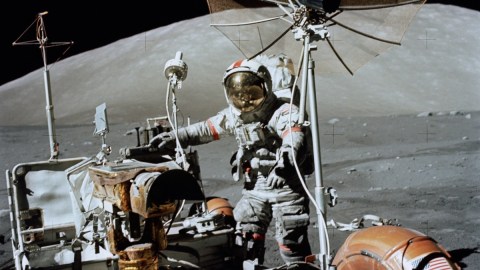
A discovery that never would have happened with robots instead of humans.
“It’s like trying to describe what you feel when you’re standing on the rim of the Grand Canyon or remembering your first love or the birth of your child. You have to be there to really know what it’s like.” –Harrison Schmitt
In all of human history, only 24 people have flown to the Moon, with 12 walking on the lunar surface. The final two, Gene Cernan and Harrison Schmitt, ran into quite a surprise. Schmitt, the lone civilian-astronaut (and only scientist) to travel to the Moon, was often described as the most business-like of all the astronauts. Which is why it must have been such a shock to hear him exclaim the following:
Oh, hey! Wait a minute… THERE IS ORANGE SOIL! It’s all over! I stirred it up with my feet!
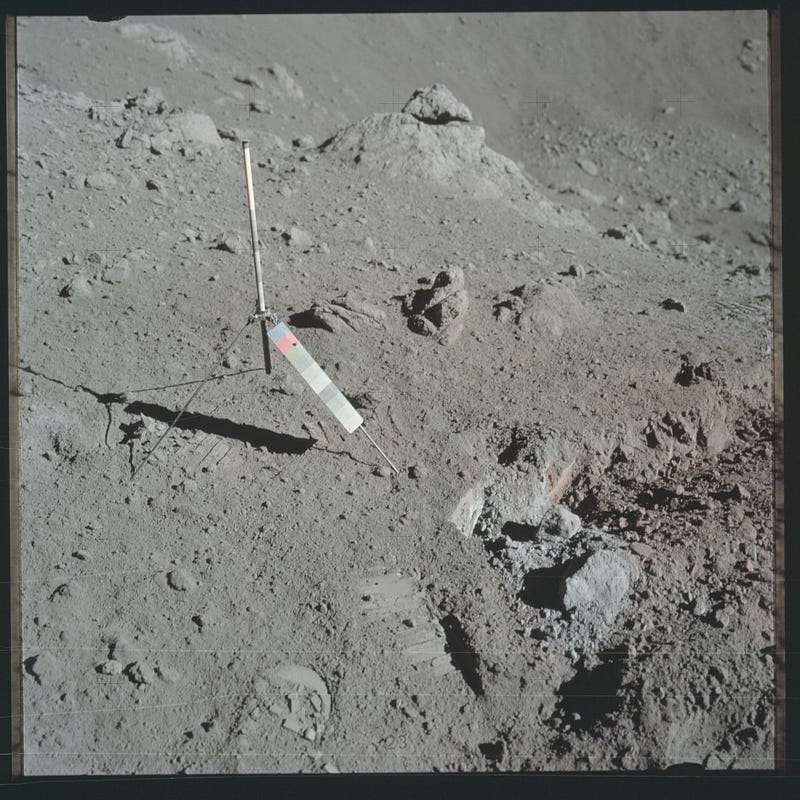
The dull, grey lunar soil you’re used to seeing — that we’re all used to seeing — in one particular spot was only a very thin veneer, covering a rich, orange landscape beneath.
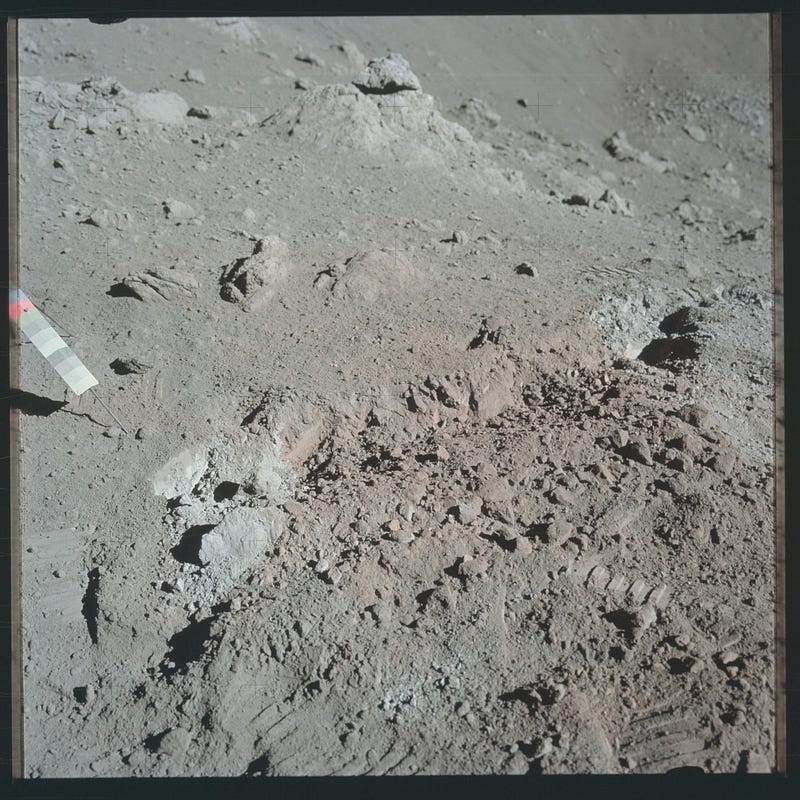
Like any good scientist, or any good explorer, for that matter, Cernan and Schmitt took pictures, collected data, and brought samples back to Earth for further analysis. What could cause orange soil on the Moon, perhaps the most featureless of all the large, airless rocks in our Solar System?
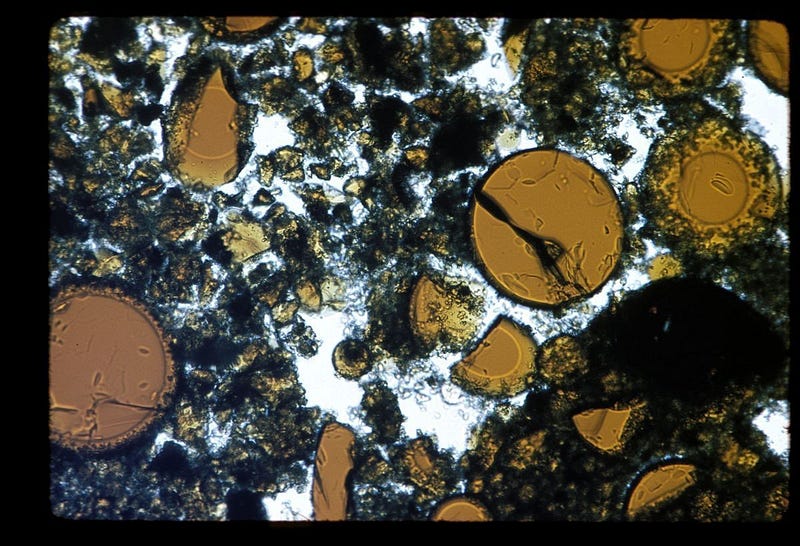
What the analysis back on Earth revealed was fantastic: this was volcanic glass. What occurred was that molten lava from the interior of the Moon erupted, some 3 to 4 billion years ago, up above the airless surface and into the vacuum of space. As the lava became exposed to the vacuum, it separated out into tiny fragments and froze, forming tiny beads of volcanic glass in orange and black colors. (The tin in some of the fragments is what gives the orange color.)

Over the decades after the Apollo missions concluded, technology continued to advance. In 2011, a team was able to analyze the samples that Schmitt and Cernan brought back, and found something spectacular: evidence that water was included during this volcanic eruption. The glass beads, based on the dryness of the Moon, should have had water concentrations of no more than 1 part-per-million (ppm), but instead exhibited water concentrations some 50 times as great. Moreover, there are olivine inclusions identified by the recent analysis, showing the presence of water in up to ~1,200 ppm concentrations.
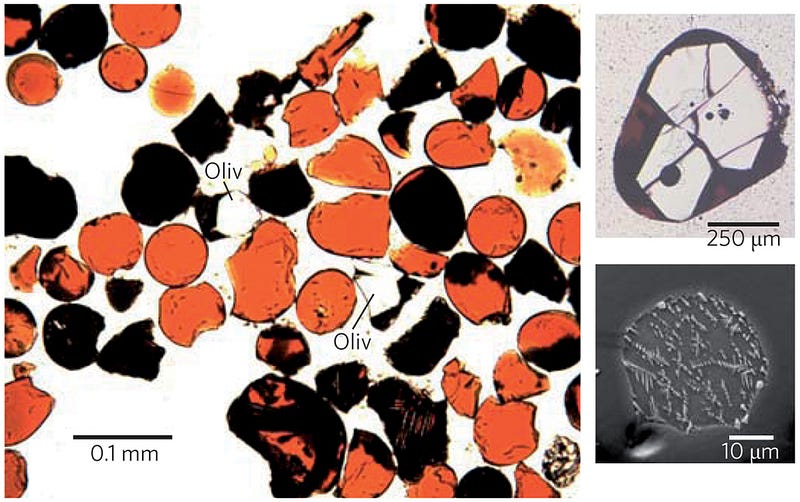
That number is important to someone who’s a geologist, because it’s the same concentration of water as rocks found in Earth’s interior! In other words, if you ever doubted that the rocks from the Moon and the rocks from the Earth came from the same place, now there’s even an extra piece of evidence: from the water inclusions found in ancient volcanic material on the Moon.
As the discovery team themselves concluded:
The lunar melt inclusions contain 615 to 1410 ppm water and high correlated amounts of fluorine (50 to 78 ppm), sulfur (612 to 877 ppm), and chlorine (1.5 to 3.0 ppm). These volatile contents are very similar to primitive terrestrial mid-ocean ridge basalts and indicate that some parts of the lunar interior contain as much water as Earth’s upper mantle.
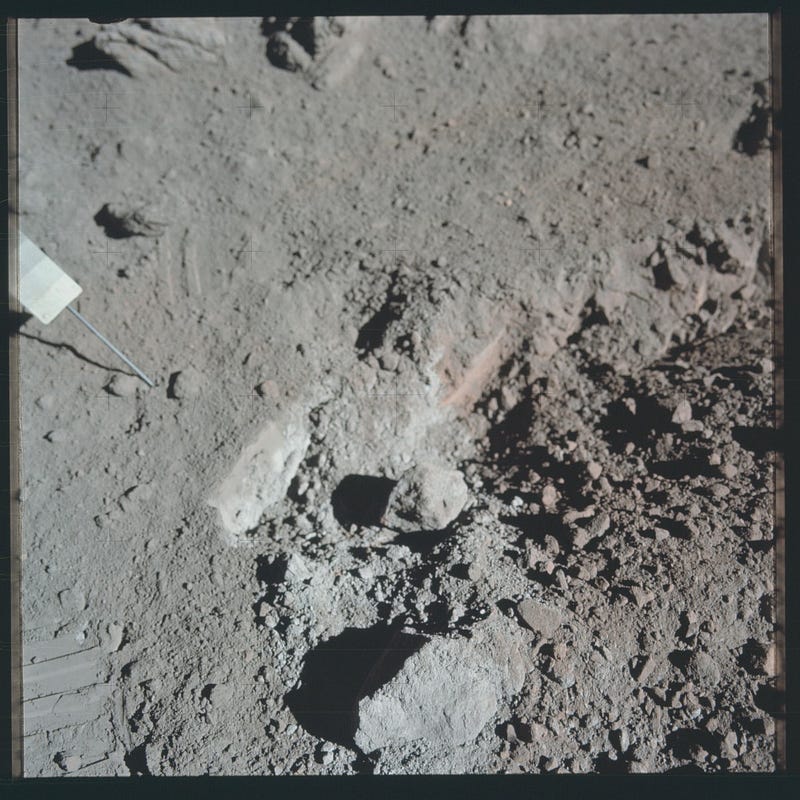
It’s arguable that all of this wouldn’t have come to pass — that we never would have learned any of this — if we hadn’t sent a human scientist to the Moon who knew when to look more closely at what was beneath their feet. As Harrison Schmitt wrote, in the aftermath of the expedition:
Finding orange soil near Station 4 on Apollo 17 at the time when oxygen was running low kept us on the jump. We dug a trench 8 inches deep and 35 inches long, took samples of the orange soil and nearby gray soil, drove a core tube into the deposit, sampled surrounding rocks, described and photographed the crater site in detail, and packed the samples — all in 35 minutes. The effort gave scientists a most unusual sample: very small beads of orange volcanic glass, formed in a great eruption of fire fountains over 3.5 billion years ago.
Thanks to the Project Apollo Archive, thousands of pictures from all of the Apollo missions are all publicly available. Including, mind you, hundreds of color photos from Apollo 17′s (extravehicular activity) EVA-2, where they found this unusual orange soil.
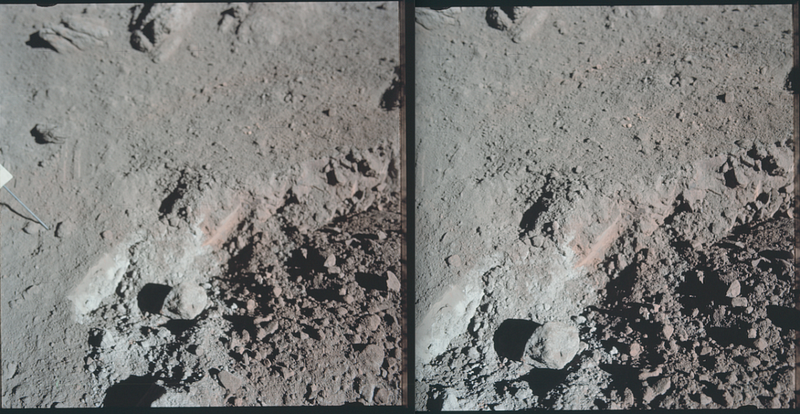
These glass beads are only tens-to-hundreds of microns across, yet within, they hold the secrets of the Moon’s past, billions and billions of years old. They may also explain just why those permanently shadowed craters at the Moon’s poles, the ones that haven’t seen sunlight in billions of years, contain so much water-ice as well: the Moon was born with water, and it’s only its complex history, rich with interactions with the Sun, that have boiled/sublimated most of it away.
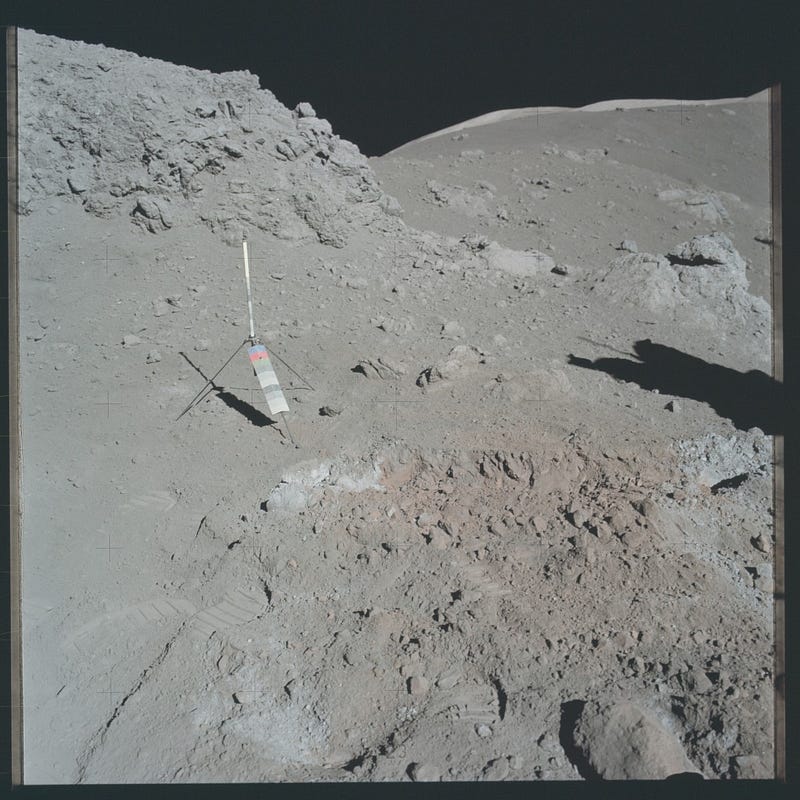
Deep beneath the lunar surface, relics of early Earth still persist: wet, frozen, and waiting to be exposed. The lunar volcanic glass exposed by the first and only scientist to walk on the Moon may be a signal to us, today, that this is what’s truly needed if we want to uncover the truths about the rest of the worlds in our Solar System: scientific exploration by a human who knows what they’re looking for. Or more importantly, who recognizes something interesting when they see it, and who isn’t afraid to kick up what might be lurking where a more autonomous mind might not think to look!
Leave your comments on our forum, help Starts With A Bang! deliver more rewards on Patreon, and order our first book, Beyond The Galaxy, out now!





